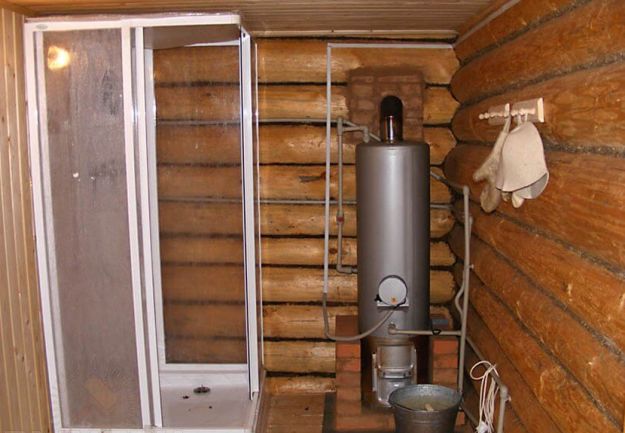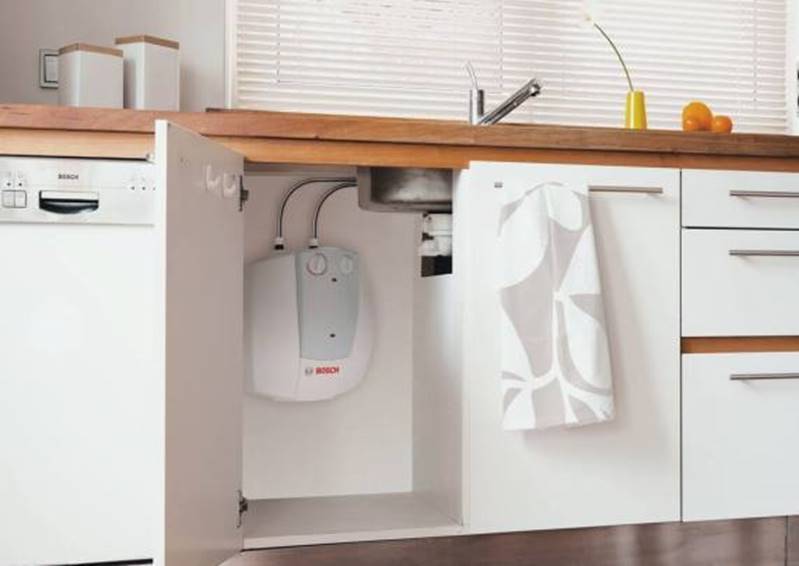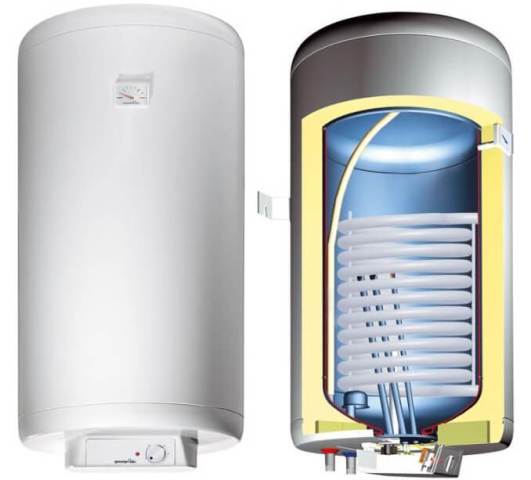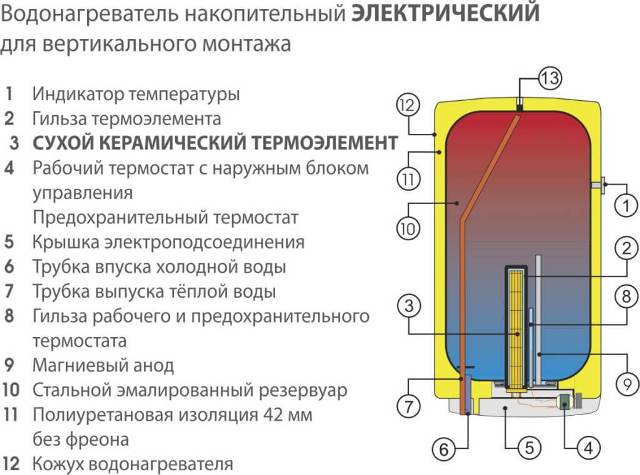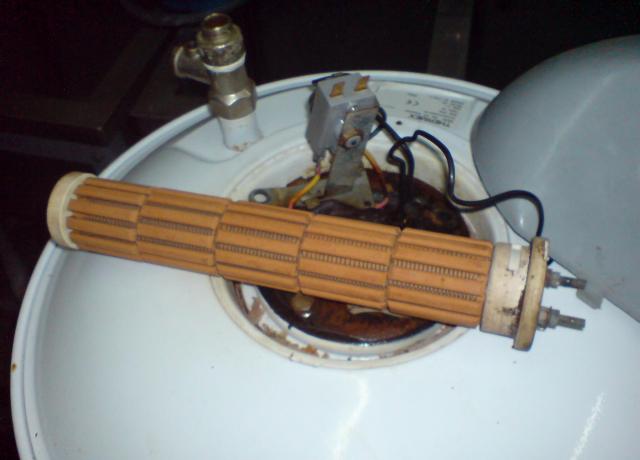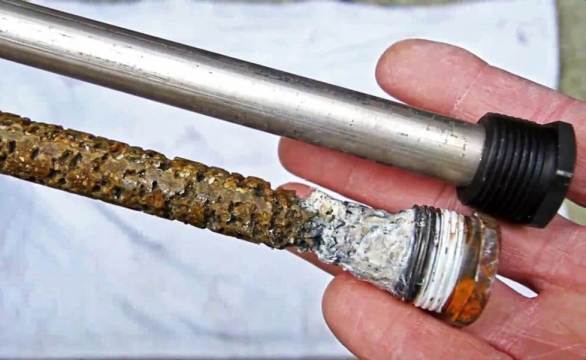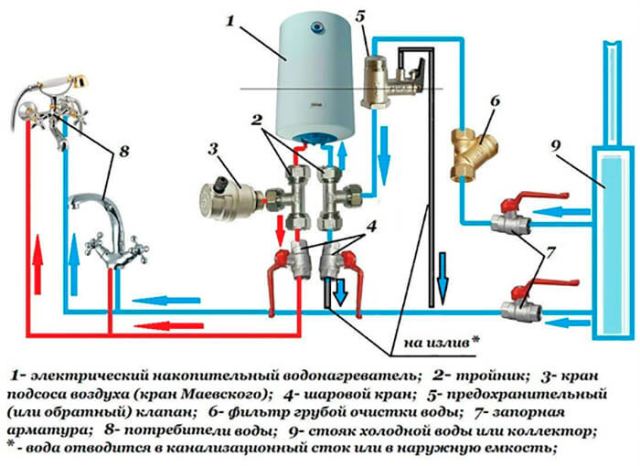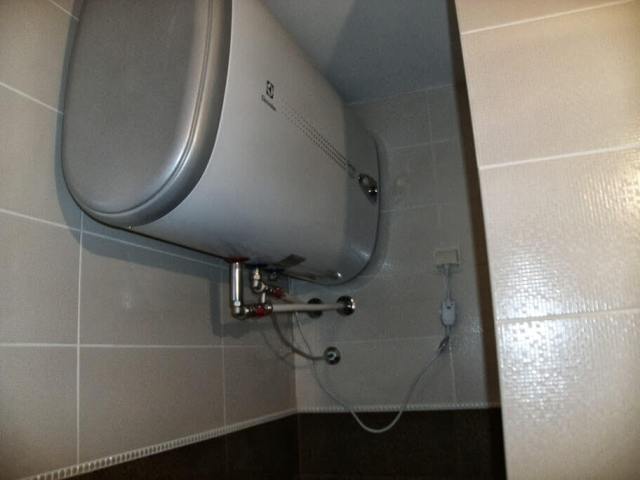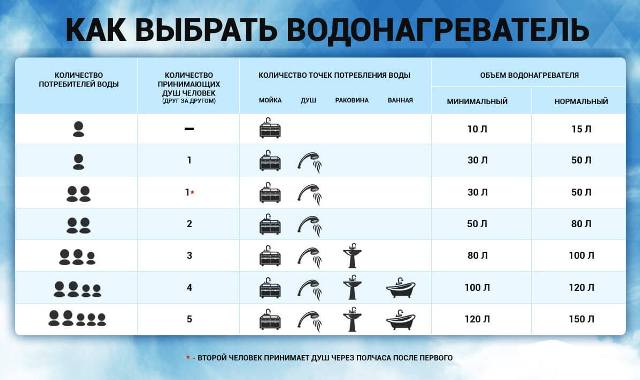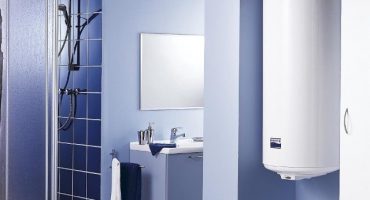The boiler is also called a water heater, as it is designed to heat water. This technique is popular because interruptions in the hot water supply are still relevant. Before choosing a model and buying, first you need to understand what a Boiler is, what are its characteristics and varieties, what is the principle of action and the rules for using the equipment.
What is a boiler
A boiler is an automated household appliance designed to heat water. It is a storage tank, which is equipped with a heating element on the outside or inside. The scope is wide enough, it can be installed both in a public room (sauna, office, restaurant, bar), and in the country, in a private country or apartment building.
The most widely used boilers with internal heating, their distinctive feature is a snake-shaped heat exchanger, immersed to the full depth of the tank. In the heat exchanger, the circulation of the heating substance (water, electricity, oil, steam) takes place.
The boiler with an external heater works due to the thermal energy obtained as a result of burning energy carriers (firewood, coal, gas).
Heated water in the tank is distributed in layers, the hottest is at the top. That is why the intake of water for flow is carried out from the upper part, and the supply of cold water is respectively summed up to the bottom.
The developers of water heaters have created the most effective thermal insulation layer. It provides long-term cooling of the water in the tank. As a result, the heat loss of a modern high-quality boiler is only 3 degrees per day.
What are the types of boilers
There are several varieties of water heaters, depending on the principle of operation and the main energy sources: gas and electric, storage and flow, combined, indirect heating.
Their distribution in a particular country is determined by natural resources. For example, in Russia, which has large gas reserves, gas boilers of indirect heating are still in demand today. And Germany was not only ahead of other countries in the electrification of each house, but also the first to begin production of electric boilers. Combined water heaters are in great demand in any country; they allow using resources with maximum effect.
Flowing
Structurally, the instantaneous water heater is a small box, inside of which there is an electric heater. Depending on the principle of operation (pressureless or pressure), it is installed either in the place where hot water is needed (washing in the kitchen, shower in the bathroom), or cut directly into the riser. In it, the amount of hot water is not limited, unlike the storage boiler. But the water temperature will depend on the power of the device itself, and on the pressure (with an increase in pressure, the temperature decreases).
Important! Instantaneous water heaters are very powerful, so before installing them, you need to tidy the electrical wiring in the house.
There is a variant of a gas-fired instantaneous water heater. These are gas columns, well-known since Soviet times.
Indirect heating
These water heaters do not independently produce thermal energy. Their operating principle is based on the use of heat from the heating system. The advantage of indirect heating boilers in the absence of additional costs. The heating system of the apartment or house works, and as if casually (as if a side effect), the water in the boiler is heated. A coolant from the main circuit is passed through its coil.
This method of heating water is considered the most economical.
Combined
This kind of boilers is recognized as the most promising. If necessary, you can go from one heating option to another, since the combined device combines two types of heating elements. For example, water heating can occur due to an electric heating element or from the energy used of a gas boiler. That is, in winter, hot water is obtained by indirect heating, and in summer from electric energy.
Cumulative
A storage boiler is the most common option for heating water. Its difference from flow models in advance heating. There are two types of storage boilers: electric and gas (in one heat source is a heating element, in the second - a gas burner).
The design and principle of operation are almost the same. The only difference is that in addition to the gas burner installed at the bottom of the gas burner, there is also a chimney pipe at the top. Installation of gas water heaters is associated with certain problems. Firstly, you need a full-fledged chimney in the house. Secondly, the connection of gas-using plants is always accompanied by difficulties in the preparation of documentation.
Therefore, the most common are accumulative electric boilers. Their characteristics, advantages and disadvantages, device and principle of operation are discussed below.
The structural device of the boiler
In simple terms, the boiler can be compared to a huge thermos, in which the water heats up and remains hot for a long time. It consists of the following basic elements:
- inner tank oval or round;
- decorative case made of plastic, stainless or enamelled steel (the internal structure of the boiler is covered from above);
- protective layer of heat-insulating material (located between the inner tank and the outer casing, most often made of dense polyurethane);
- fasteners with which the boiler will be mounted on the floor or wall (located on the outer casing);
- tubular electric heater (TEN), with the help of which the water is heated to the desired temperature (located in the lower part of the tank);
- a thermostat that limits the temperature to a maximum of 75 degrees (located below the heating element);
- tubes for supplying cold and draining hot water (mounted in the inner tank);
- protective magnesium anode;
- safety valve;
- control scheme.
The outer casing may have a different shape: rectangular, oval or cylindrical. Produce models of various colors and design. In addition to fasteners, there are also controls, regulators and a thermometer on the body, with which you can control the operation of the boiler.
Particular attention should be paid to the heating element. TENY use different power (this value determines the power of the boiler). According to the principle of heating, they are:
- Wet type.Such a heater is in direct contact with water, as a result of which scale forms on it, which must be removed.
- Dry type. This heater is much more advantageous, since it is structurally located in a metal tube through which contact with water is carried out. Thus, a dry type heating element is protected from scale, as is the tube itself, coated with a glass-porcelain layer.
Another structural element is a safety valve. Why is it needed? When the water heater is operating normally, the valve does not play any role. But in an emergency, if, for example, the thermostat breaks down, the water in the boiler heats up to boiling, which will lead to an increase in pressure to unacceptable values and a possible rupture of the internal tank. In this case, the safety valve is activated, which is located on the cold water supply pipe. When the pressure limits are reached, it opens and water is released.
Important! It is also possible to drain water from the boiler through a safety valve if repairs or maintenance are required.
An important element in the device of the water heater is a magnesium rod. The purpose of this electrode (anode) is to reduce the ion exchange between metal components inside the boiler. In exchange, he gives up his particles, as a result of which the effect of leaching electrons from the structural elements of the water heater is minimized, and they are less susceptible to corrosion. The anode itself is quickly destroyed and needs to be changed periodically (if its length is reduced to 200 mm and its thickness is up to 10 mm).
Principle of operation
The operation of the water heater is based on the fact that water layers with different temperatures are separated.
Cold water flows into the bottom of the tank. A heater is installed there, with its help it heats up and rises up. The inlet pipe is equipped with a divider, which prevents the liquid from flowing out, so hot and cold water do not mix.
The temperature of the water heating is controlled by a thermostat. As soon as the desired heating level is reached, the electric circuit is opened, and power is not supplied to the heater. The resulting water temperature is maintained by the thermal insulation layer. As the intake of hot water from the upper layer, it is replaced by a newly heated. Thus, a continuous heating process is obtained. If the flow rate is large, then over time the temperature of the water leaving the boiler will begin to decrease.
Water heater connection
A brief algorithm for connecting the boiler to work is as follows:
- Installation of a water heater on a wall surface or on a floor.
- Supply of water pipes to it (cold supply and hot water outlet).
- Installation of all necessary elements and insert.
- Connecting the boiler to the power supply network.
- Testing. To release air from the tank, first open the hot water tap. Then they open the cold water supply and carefully examine all joints for leaks. If no leaks are found, the tank is completely filled with water.
- It remains to turn on the boiler and check it for heating water.
Important! The boiler creates a fairly powerful load in the mains. Therefore, to connect it, it is advisable to extend an individual power cable from the distribution panel and install a separate automatic machine.
Main characteristics
The main technical characteristics of the boiler are:
- Case material (enamel, stainless steel, plastic).
- Type of placement (wall, floor, vertical, horizontal).
- Rated voltage of an electric network (220 or 380 V).
- Water pressure (especially relevant for instantaneous water heaters). With a small pressure in the water supply, the heating element may deteriorate
- Volume of the tank.
- Weight.
- Overall dimensions (depth, width, height).
- Maximum power.
- The presence of a water temperature regulator, a magnesium anode.
- The thickness and material of the insulation layer (the most highly effective is polyurethane foam).
- Heat losses (directly depend on the insulation layer, the thicker it is, the less losses and the more economical the water heater).
- Type of control (hydraulic, electronic, LCD display).
Important! All characteristics of the water heater are indicated in the passport, so you should carefully read it when buying.
Tips for choosing a boiler
Like any household appliances, the boiler has its positive and negative sides.
The main advantage of this technique is that under any external circumstances there will always be hot water in the house. For small towns and villages where there are problems with hot water supply (or it is completely absent), this is the only way out.
When choosing a water heater, it is necessary to take into account the advantages and disadvantages of each of them. For example, installing a flow-through boiler, you do not have to wait until hot water is warmed up, its amount will not depend on the volume of the tank. But you will need a powerful separate machine and a power cable to connect the device, and energy consumption will also significantly increase.
The storage boiler consumes less electricity, but only a certain amount of hot water is produced. And its main drawback is that it takes up a lot of space.
When choosing a boiler, one must adhere to certain criteria.
Installation purpose
The main criterion for buying a water heater is the purpose of its acquisition:
- have a reserve in case of shutdown of hot water supply;
- instant heating of water for washing dishes or taking a shower;
- constant supply of apartments (houses, villas) with hot water.
External dimensions and volume
You must immediately determine the place of installation of the water heater. This technique is large-sized, wherever you can’t put and hang. When choosing external parameters, one should not forget about such an important criterion as the volume of the boiler. This value depends on the number of people living in the house. A certain role is played by the bathroom equipment, that is, what is used for bathing in it - a shower or a bathtub. Using a shower is much more economical, with such bathing it takes about 15-20 liters of water per person. In the bathroom for a similar procedure, you will need 50 liters.
If a boiler is needed only to provide hot water for washing dishes, and nothing more (without bathing), then a device for 15-20 liters will be sufficient. Such a water heater is usually installed in the kitchen directly under the sink.
Power
An important role in choosing a water heater is power. The more powerful the heater will be (from 1 to 6 kW), the faster the water will heat up, but will the wiring in the house withstand such a load? If it is new and able to withstand a load of 6 kW, then the boiler power can be safely selected based on the needs and number of residents. In apartments with old electrical wiring, the maximum you can count on is a 2.5 kW water heater.
Tank inner cover
In cheap boilers, the inner coating of the tank is made of enamel or glass ceramics. In expensive models use titanium spraying or stainless steel. When choosing a person proceeds from their financial capabilities, but the high price, as a rule, guarantees quality and durability. In the case of household appliances is not worth saving.
Important! For boilers with an internal stainless steel tank, manufacturers give a long warranty period.
The quality of the water heater is recommended to be checked by weight. The heavier it is, the better it will resist corrosion due to the greater wall thickness.
What else to look for
The following options are important:
- The degree of protection against moisture and dust of the boiler (IP) must be at least 23. In the event that the water heater is installed in the bathroom, sauna, bath, a more protected model with IP 44 is required.
- It is worth giving preference to models with a dry tubular electric heater (TEN). The lack of contact with water not only prevents the appearance of scale, but also reduces the risk of electric shock, since the heater is placed in a sealed glass.
- When buying a boiler, you must pay attention to the fact that it has a magnesium anode. Safer and more comfortable in terms of operation will be models with protection against overheating, an indication of inclusion, and an accelerated heating function.
- When choosing a boiler for a summer residence where no one lives in winter, it is worth giving preference to models with a frost prevention mode.
- Be sure to buy a water heater should be interested in its insulating layer. Recommended thickness - not less than 35 mm (the thicker the longer the stored temperature will remain). The highest quality material is foamed polyurethane (much better than foam rubber).
Top 5 Popular Models
| Model name | Volume of the tank | Price | Power | type of instalation | Features |
|---|---|---|---|---|---|
| BOSCH Tronic 1000 T ES 050-5 N 0 WIV-B | 50 l | 125 at e. | 1,5 kW | vertical, wall | magnesium anode, thermal insulation - 32 mm |
| Ariston ABS VLS PW 80V | 80 l | 270 oz e. | 2.5 kW | vertical, wall | frost protection, thermal insulation - 32 mm |
| GORENJE GBF 80 | 80 l | 190 y e. | 2.0 kW | vertical, wall | magnesium anode thermal insulation - 17 mm |
| THERMEX IF 100 V | 100 l | 245 at e. | 2.0 kW | vertical, wall | magnesium anode thermal insulation - 17 mm |
| THERMEX ER 80 V SilverHeat | 80 l | 100 at e. | 1,5 kW | vertical, wall | magnesium anode thermal insulation - 17 mm |
How to save electricity
You can save a little electricity that the boiler consumes during operation. To do this, it is recommended to set the heating temperature not to a maximum (75-85 degrees), but to 55-60. When cold water enters the tank and combines with the liquid that is already there, it will take less energy to heat the mixed mass. In addition, the temperature regime of 55-60 degrees will help significantly reduce the process of scale formation on the heater.
It is necessary to choose the correct location of the boiler so that the pipeline from it to the sink or shower is not too long. Due to this, heat from hot water will be less dispersed.
Periodically it is necessary to carry out preventive cleaning of the heating element from scale. Due to this procedure, its efficiency increases - the cost of electricity for heat generation will be less.


